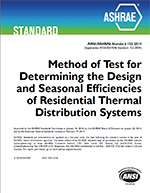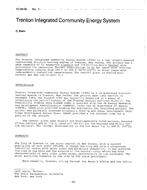The performance of chilled ceiling (CC) displacement ventilation system (DV) is constrained by latent load removal capacity due to potential condensation at the chilled ceiling. A liquid desiccant dehumidification membrane system is mathematically modeled and proposed to replace the chilled ceiling to remove both latent and sensible load in humid climate. The desiccant system is coupled with displacement ventilation system to enhance the indoor air quality. Solar energy is used as thermal energy source required for the regeneration of the desiccant. The operation of the system is simulated using integrated component models of the various sub-systems and an optimized operational strategy is adopted. The optimized parameters for system operation are the DV supply flow rate and temperature and the desiccant temperature at the inlet of the ceiling membrane. The model of the combined system and its optimization were implemented for a case study consisting of an office during the month of July in Beirut hot and humid climate. When using optimal set points, a decrease of 33.4% in energy consumption is observed when compared to the conventional CC/DV system while comfort and IAQ were satisfied.
Citation: 6th International Conference on Energy Research and Development, State of Kuwait, March 14–16, 2016
Product Details
- Published:
- 2016
- Number of Pages:
- 8
- Units of Measure:
- Dual
- File Size:
- 1 file , 2.7 MB
- Product Code(s):
- D-ICER16-04


